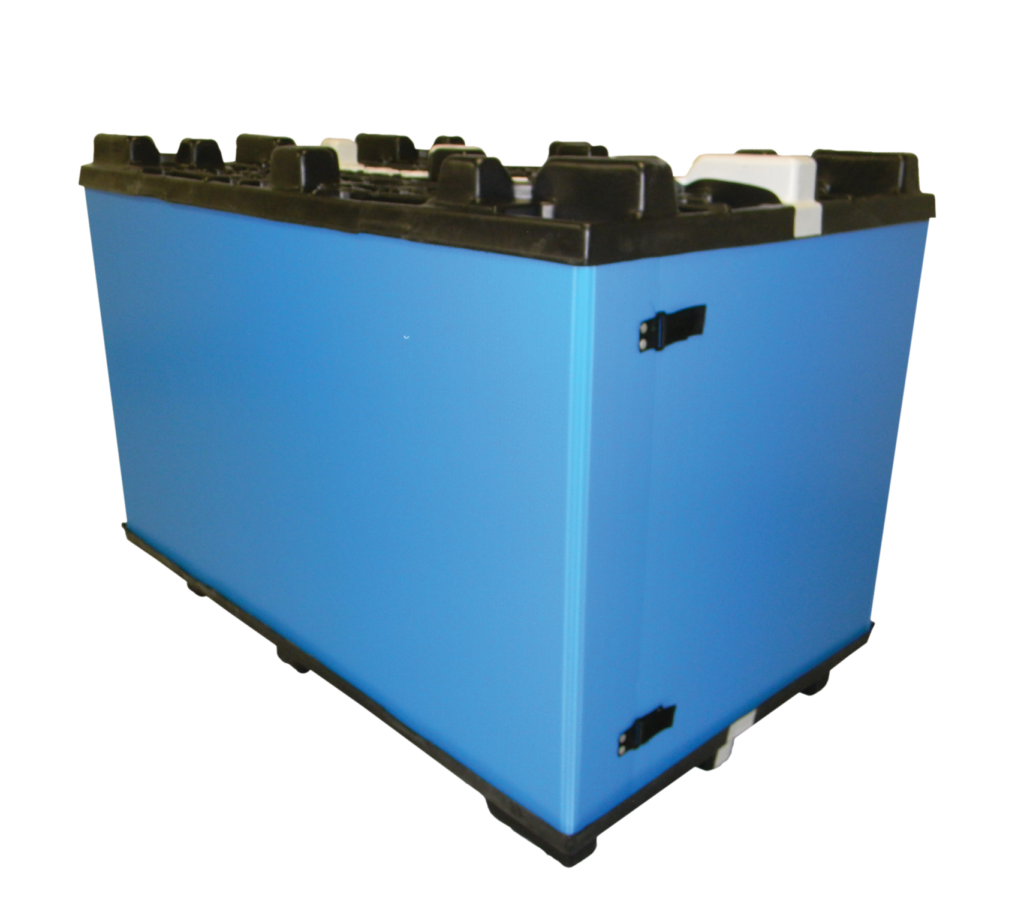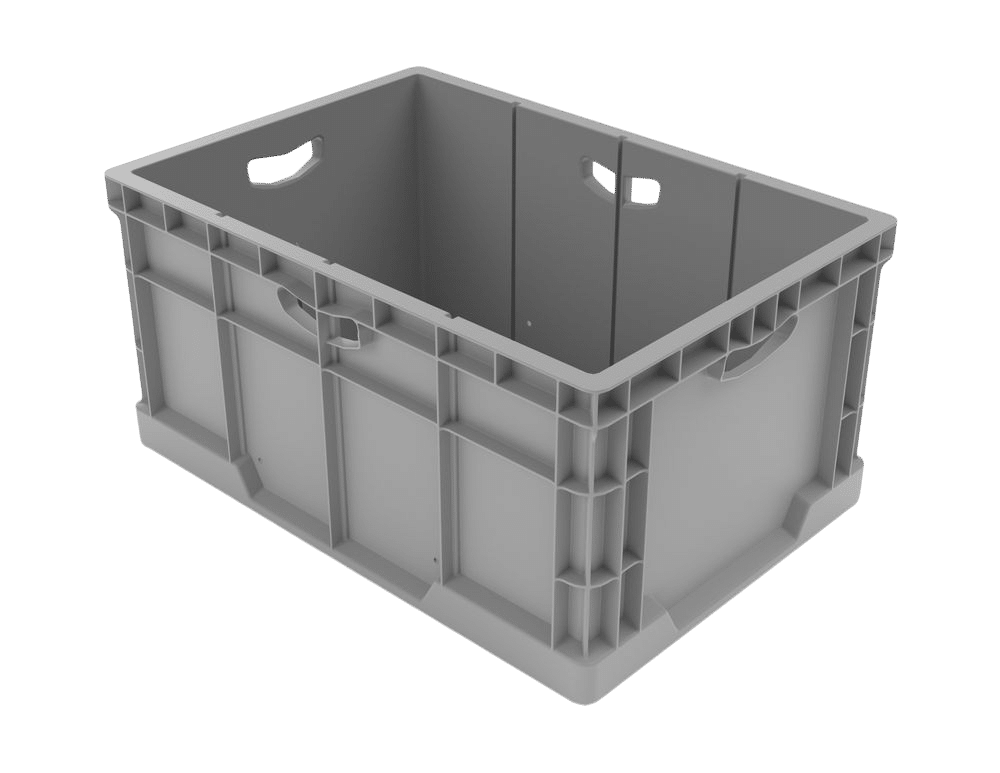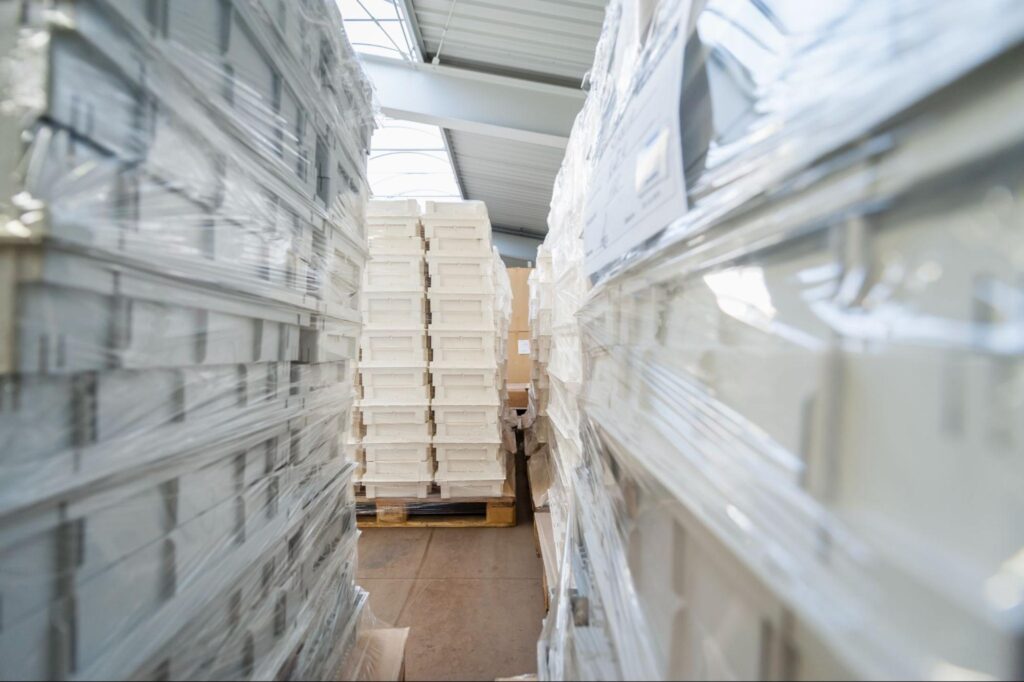In the fast-paced world of industrial packaging, ensuring the durability and reliability of containers is paramount. Companies across various sectors rely on robust packaging to protect their products during transportation and storage. One critical practice that underpins the integrity of packaging solutions is top load testing. This essential evaluation determines how well a container can withstand compressive forces, safeguarding products from damage.
Understanding Compression Strength Testing
Compression strength testing, often referred to as top load testing, assesses a packaging container’s ability to resist being compressed without losing its shape or integrity. Imagine stacking boxes in a warehouse; this testing ensures that each box can handle the weight above it without collapsing. By simulating these real-world pressures, manufacturers can guarantee that packaging meets the necessary standards for reliability and safety. Top load testing evaluates the structural integrity of packaging materials under axial loads.
The Necessity of Top Load Testing in Industrial Packaging
Industrial packaging often faces rigorous demands. Containers are stacked in warehouses, loaded onto trucks, and subjected to dynamic forces during transit. Without proper testing, packaging failures can occur, leading to damaged goods, financial losses, and compromised safety.
Top load testing is critical in preventing such scenarios. It assesses the maximum load a container can bear from the top before deforming or collapsing. This information is essential for:
- Maintaining Product Safety: Ensuring that products remain undamaged throughout the supply chain.
- Preventing Packaging Failure: Identifying the load limits to avoid structural failures under high pressure.
- Compliance with Standards: Meeting industry regulations and standards for packaging strength and safety.
By integrating top load testing into the packaging development process, companies can mitigate risks associated with product loss and enhance overall operational efficiency. Additionally, consistent testing fosters continuous improvement in packaging designs, contributing to long-term sustainability and cost-effectiveness.
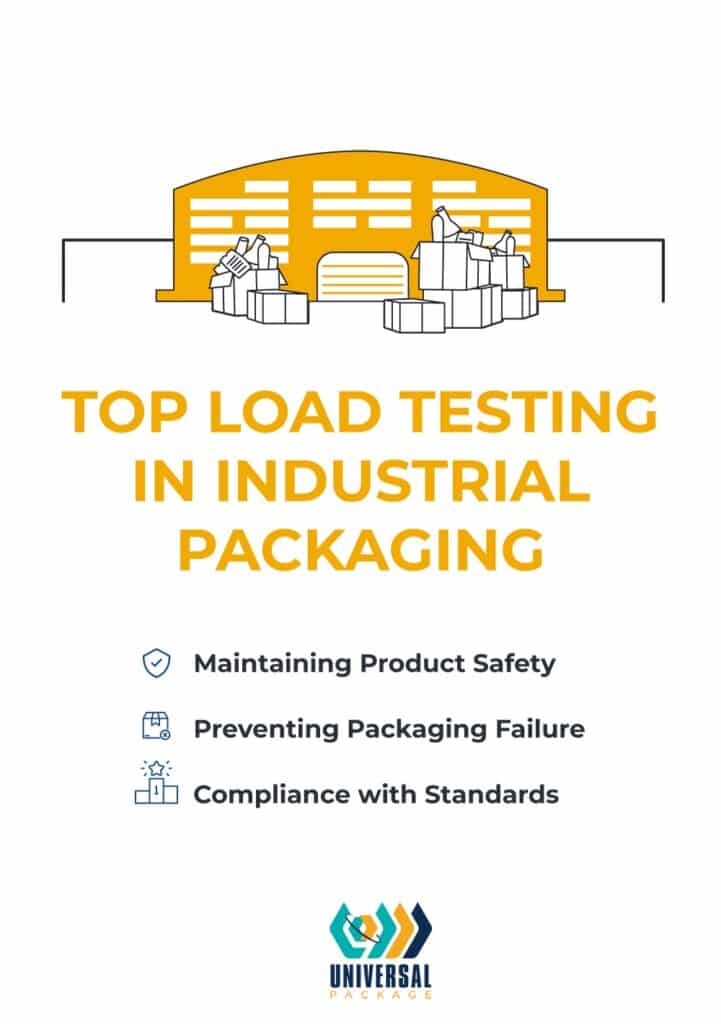
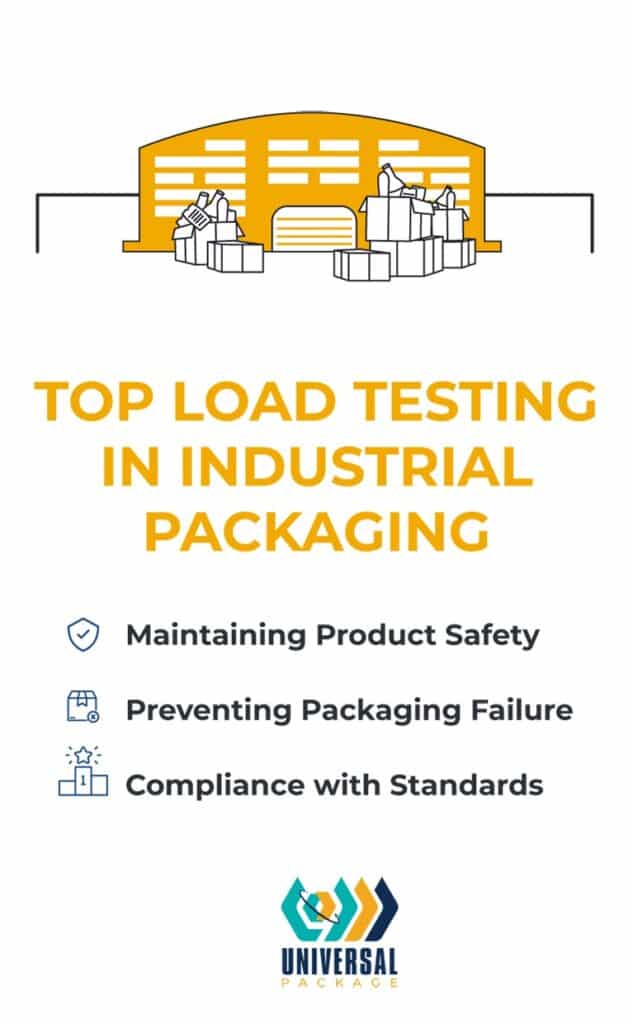
Detailed Process of Top Load Testing
Top load testing involves a systematic procedure to evaluate the compressive strength of packaging containers. Here’s a streamlined overview of how this testing is conducted:
1. Preparation of the Test Sample
- Selection: A representative sample of the plastic container is chosen.
- Conditioning: The sample is prepared under standard temperatures and humidity to ensure accurate results.
2. Setting Up the Testing Equipment
- Machine Selection: The testing machine is equipped with appropriate load cells, fixtures, and software to measure and record the necessary data.
- Calibration: The equipment is calibrated to ensure accurate results.
3. Application of Compressive Force
- Alignment: The container is placed to ensure even distribution of force.
- Compression: A downward force is applied at a controlled rate, simulating stacking or top loads.
- Monitoring: The force and deformation are continuously recorded.
4. Recording Results
- Peak Force: The maximum force the container withstands before deformation.
- Deformation Data: The extent to which the container deforms under specific loads.
- Failure Point: Identification of the load at which structural failure occurs.
5. Safety Protocols
- Protective Equipment: Operators wear protective gear to prevent injuries. This is an essential practice in packaging environments.
- Emergency Stops: Testing machines can be equipped with emergency stop functions to ensure safety.
By meticulously conducting top load testing, manufacturers gain valuable insights into the performance of their packaging solutions, enabling informed design and material choices. This rigorous approach not only enhances product protection but also optimizes manufacturing processes, leading to more efficient production cycles.
Application of Top Load Testing
Top load testing plays a crucial role in ensuring the durability and performance of various packaging solutions. Companies aiming to guarantee that their packaging meets industry standards can implement this testing to assess and enhance their products.
Custom-designed packaging solutions, such as corrugated plastic containers and foam assemblies, can benefit significantly from this rigorous testing process. Industries ranging from automotive to medical require packaging that withstands demanding conditions.
By leveraging insights from top load testing, manufacturers can refine their packaging designs, resulting in products that offer enhanced durability and reliability. This approach not only assures product safety across supply chains but also allows for cost-effective and sustainable packaging solutions tailored to meet the specific needs of diverse sectors.
Benefits of Top Load Testing for Plastic Containers
Engaging in thorough top load testing offers numerous advantages for both manufacturers and end-users of plastic containers:
Enhanced Durability and Robustness
Top load testing identifies the optimal material specifications and design features needed to withstand compressive forces. This results in packaging that can endure the demands of industrial use, reducing the risk of damage.
Protection Against Deformation
Understanding how a container behaves under load allows manufacturers to design packaging that resists deformation. This ensures that containers maintain their shape and functionality throughout their lifecycle.
Financial Advantages
Investing in top load testing leads to:
- Reduced Product Loss: Minimizes the chances of product damage during transit.
- Lower Damage Claims: Decreases the likelihood of incurring costs associated with damaged goods.
- Cost-Efficient Designs: Enables material optimization, potentially reducing material costs without sacrificing quality.
Compliance and Customer Satisfaction
Packaging that passes top load testing is more likely to comply with industry standards and regulations, fostering trust with clients and end-users. It also enhances customer satisfaction by ensuring products arrive in perfect condition. Furthermore, reliable packaging strengthens brand reputation, as clients associate the brand with quality and dependability.
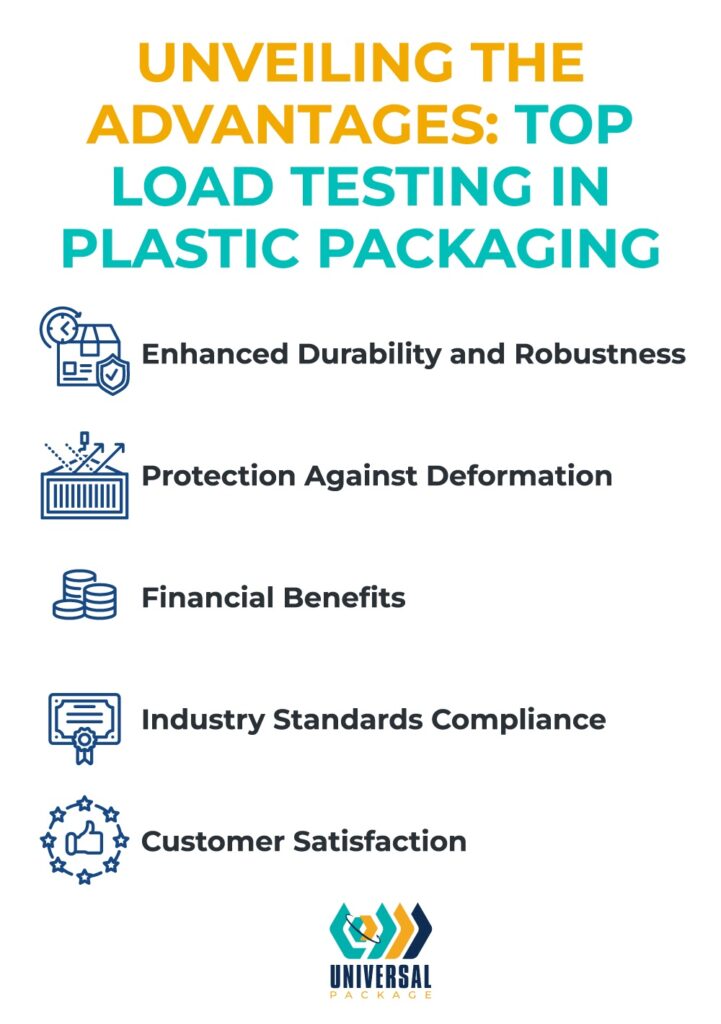
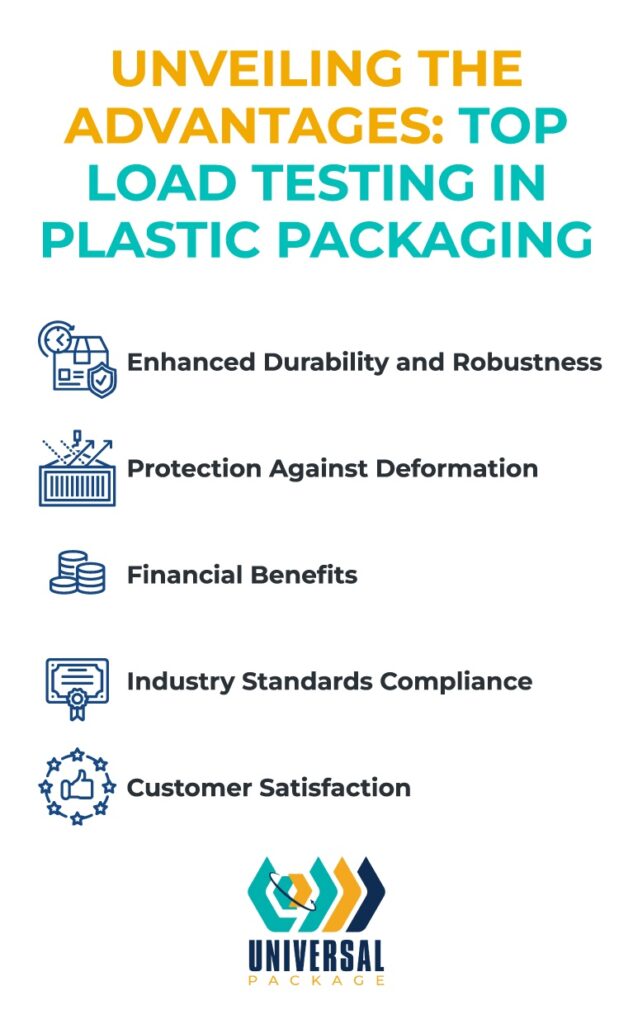
Industry-Specific Impacts of Top Load Testing
Different industries have unique packaging requirements. Top load testing addresses these specific needs, providing tailored benefits:
Automotive Sector
In the automotive sector, components are often heavy and require secure packaging to prevent movement and damage. Top load-tested containers ensure that parts reach their destination without defects, maintaining the integrity of supply chains and production schedules.
Electronics Sector
Electronic components are sensitive to physical stress. Custom electronics packaging solutions that have undergone top load testing offer the necessary protection against compressive forces, safeguarding delicate circuitry from damage during handling and shipping.
Medical Field
Medical devices and supplies demand the highest level of protection. Top load-tested packaging ensures that these critical items are delivered safely, preserving their functionality and contributing to patient safety.
By applying industry-specific insights to top load testing procedures, companies can meet the precise demands of each sector. This specialization enhances the effectiveness of packaging solutions, ensuring that they are not only durable but also tailored to the specific challenges of each industry.
Future Trends in Top Load Testing
The field of top load testing is continuously evolving, with emerging technologies and methodologies poised to enhance packaging quality further.
Advanced Testing Equipment
Implementing automated testing machines increases precision and efficiency. Automation reduces human error and allows for higher throughput, enabling manufacturers to test more samples in less time without compromising accuracy.
Sustainable Materials and Lightweighting
Material innovation focuses on decreasing the environmental impact while maintaining packaging strength. The development of sustainable packaging strategies and lightweight designs contributes to sustainability goals, reducing material usage and transportation emissions.
Non-Destructive Testing Methods
Developing non-destructive testing methods that do not damage the container allows for ongoing quality assessments, preserving samples for continuous testing. Non-destructive methods enable repeated testing on the same sample, providing more comprehensive data on packaging performance over time.
Integration with Industry 4.0
Integration with Industry 4.0 involves IoT connectivity in testing equipment, supporting seamless data sharing and analysis, facilitating real-time insights and predictive maintenance. This integration allows for smarter testing processes, where data collected from tests can be analyzed to predict future performance and identify potential issues before they arise.
Enhanced Data Analytics
Advanced data analytics tools are being integrated into top load testing to interpret large volumes of data more effectively. These tools help manufacturers understand trends, optimize testing parameters, and improve overall packaging design based on data-driven insights.
Ensuring Lasting Reliability with Comprehensive Testing
Top load testing is undeniably a cornerstone in ensuring the durability and reliability of plastic packaging solutions. By rigorously evaluating the compression strength of containers, manufacturers can deliver products that withstand the demanding conditions of industrial use. Companies dedicated to quality can provide clients with packaging that not only meets their specific requirements but also upholds the highest standards of safety and performance.
Ready to secure your products with packaging that stands up to the toughest tests? Contact the packaging experts at Universal Package today for a consultation on custom packaging solutions designed to meet and exceed rigorous testing standards.

